 (2004-2008) The Florida Keys is an archipelago of about 1.700 islands in the southeast United States. They begin at the south-eastern tip of the Florida peninsula, about 15 miles south of Miami, and extend in a gentle arc south-southwest and then westward to Key West, the westernmost of the inhabited islands. The islands lie along the Florida Straits, dividing the Atlantic Ocean to the east from the Gulf of Mexico to the west, and defining one edge of Florida Bay. At the nearest point, the southern tip of Key West is just 157 km from Cuba.
(2004-2008) The Florida Keys is an archipelago of about 1.700 islands in the southeast United States. They begin at the south-eastern tip of the Florida peninsula, about 15 miles south of Miami, and extend in a gentle arc south-southwest and then westward to Key West, the westernmost of the inhabited islands. The islands lie along the Florida Straits, dividing the Atlantic Ocean to the east from the Gulf of Mexico to the west, and defining one edge of Florida Bay. At the nearest point, the southern tip of Key West is just 157 km from Cuba.
Florida Keys can boast of some of the world's best saltwater fishing, and it's here that Ernest Hemingway and Zane Grey made their names. Today there are luxury marinas everywhere and sport fishing shops on almost every street corner.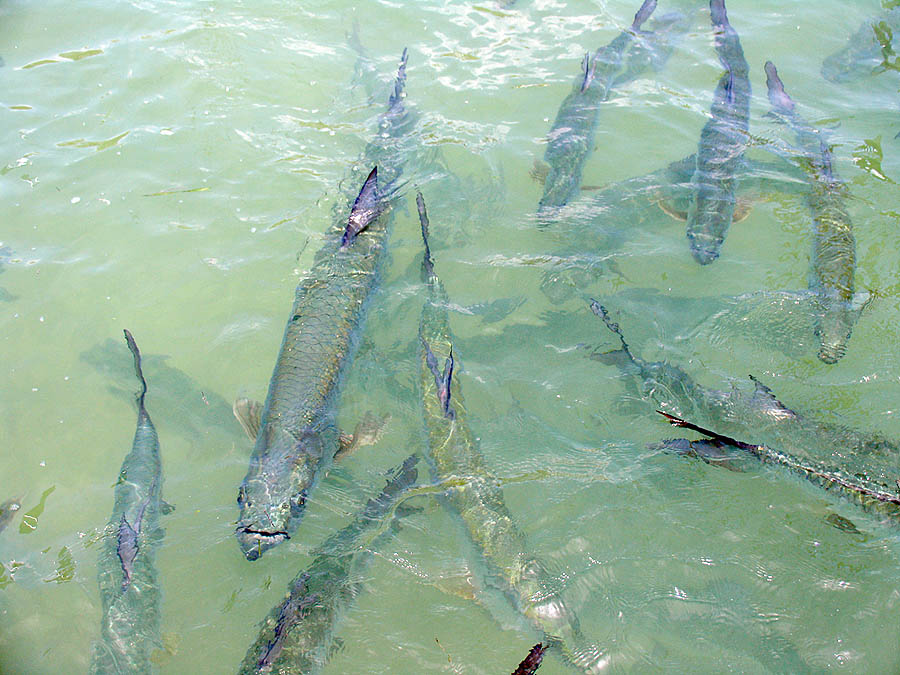
The Atlantic tarpon (Megalops atlanticus) looks much like an overgrown herring with its under-slung mouth and big-scaled, silver-plated body. But here the comparison ends – the tarpon is a very tough and enduring fish, capable of surviving in even oxygen-poor brackish waters. The tarpon has no teeth as such, but sandpaper-like gums.
The Atlantic tarpon is found throughout the tropical and sub-tropical Atlantic Ocean, and it is solidly renowned for its fighting qualities and stunning aerobatics. The best time for tarpon fishing in the Keys is March to June, when the average size seems bigger than in the autumn, and also the daytime fishing is at its peak.
My friend, Morten, and I had a somewhat troublesome trip to the States because of missed flights and delayed baggage – also the weather wasn't very good at the Keys with thunderstorms and 35 mph winds every day, which hampered our hopes of fishing for shark in the Mexican Gulf and snook in the Everglades.
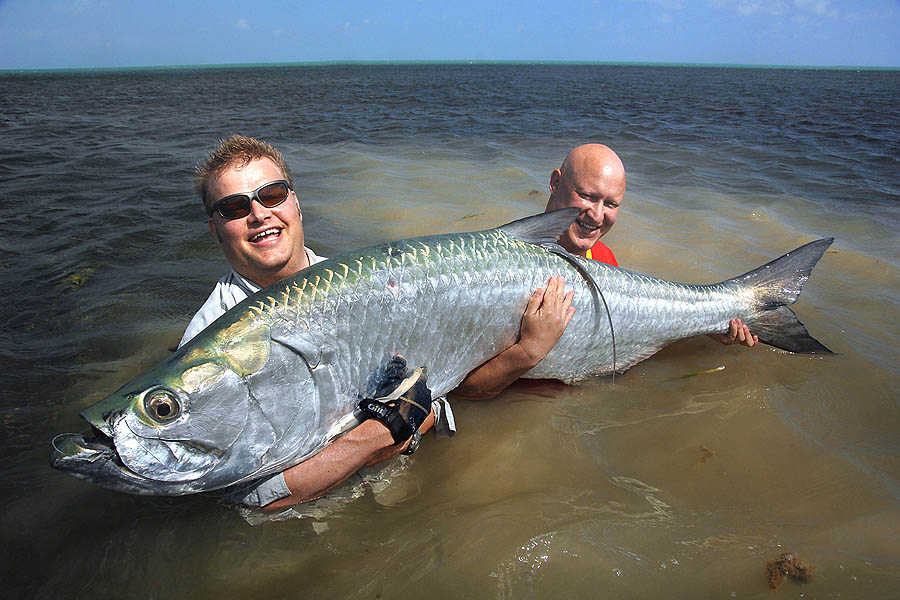 But, having said that, we could still say we had a fabulous trip!!!
But, having said that, we could still say we had a fabulous trip!!!
Last time we fished for tarpon, we fished there in July, and then the tides were such that nighttime fishing was the best. We caught many beautiful tarpon with an average weight of 120 to 180 lbs, which of course was absolutely wonderful, but we felt we needed to catch them I daytime too, to be ably to really enjoy the fights and aerobatics. I can safely say, we succeeded…
We fished three different ways this time:
Due to the wind direction it was by far the easiest to drift fish right outside our marina, and that wasn't bad at all. With the boat positioned correctly, we could cover a huge, deep area near the coast. We used live crab; hair rigged to a circle hook, and suspended about 4 feet under a small polystyrene float. Every time we fished this way we had nice, big tarpon.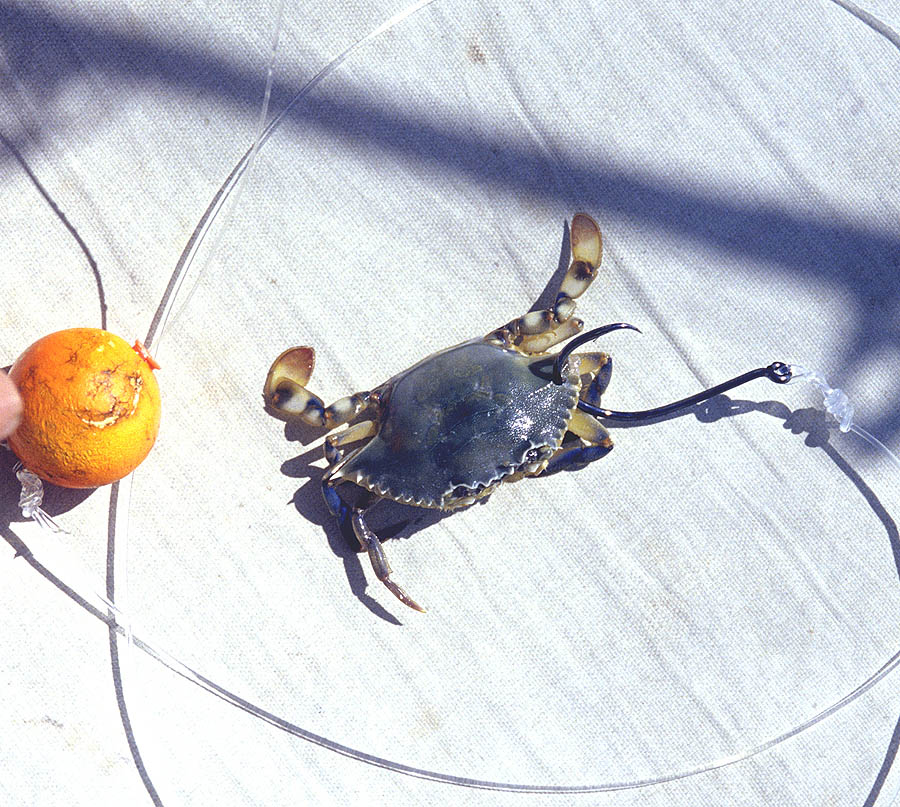
Another successful method was anchoring up at a drop off just on the edge of the shallow flats, where the depth went straight down to about 15 feet. Dave knew a couple of productive places like that, again not far from our marina.
Here we also used live crab, which we let out behind the boat into the current - and on top of that we put a whole mullet dead-bait on the bottom. We had a few tarpon hit the crabs, but it was the dead-bait, which produced the best results - that way we got the biggest tarpon (150 lbs) and lots of super interesting side catches: nurse shark (Ginglymostoma cirratum) to 150 lbs, blacktip shark (Carcharhinus limbatus) & Caribbean reef shark (Carcharhinus perezii) to over 20 lbs, bonnethead (Sphyrna tiburo) to over 10 lbs, southern stingray (Dasyatis americana) to 80 lbs, barracuda (Sphyraena barracuda) to 20 lbs, and a small crevalle jack. Last time we also got spinner shark (Carcharhinus brevipinna) to 130 lbs, and bull shark (Carcharhinus leucas) to well over 300 lbs.
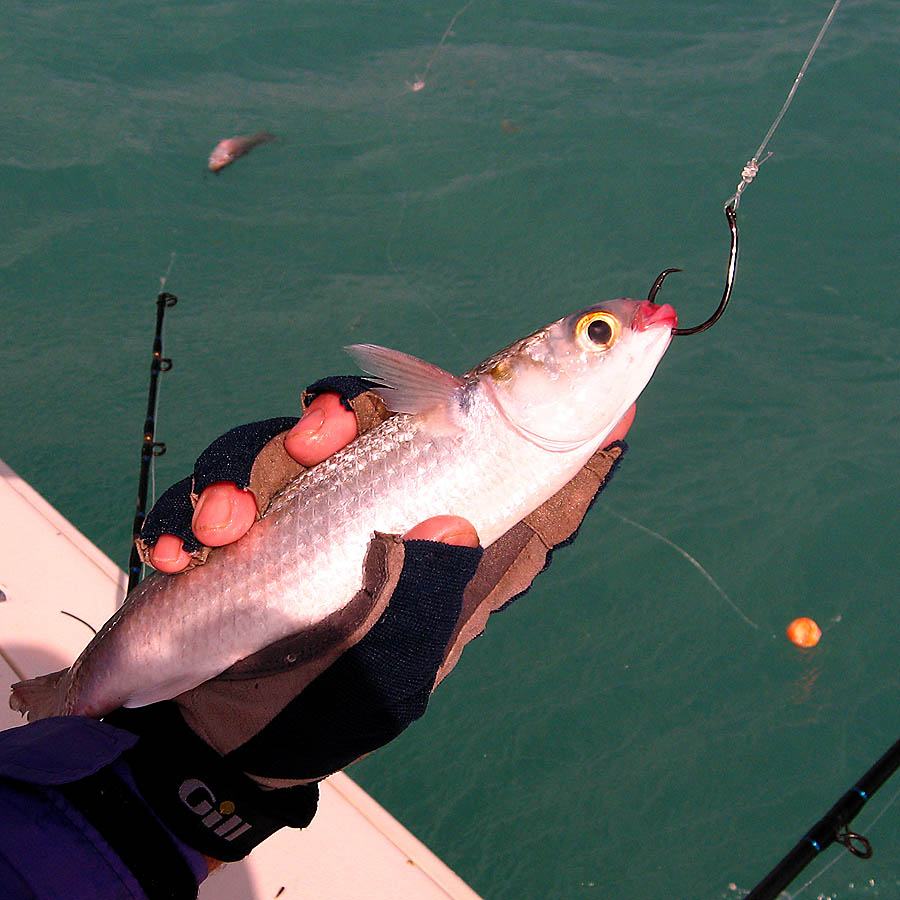 The third, and by far the most exciting method, was fishing with live mullet, anchored up in the tidal current just behind the bridge pillars.
The third, and by far the most exciting method, was fishing with live mullet, anchored up in the tidal current just behind the bridge pillars.
Good quality, fresh, live mullet are not easy to come by, unless you can catch them yourself. Fortunately for us, Dave is very proficient with a cast-net, so we spent some time in the luxurious marinas in the area, chasing the elusive and shy mullet. It didn't help matters that we had to fight for position with swimmers, kite surfers and jet skis. Also, the mullet is on top of most water-bound predators' menu around the keys; the dolphins, especially, made a show of chasing the schools of mullet; thundering through the shallows, sending cascades of water and mud high into the air.
The live mullet was hooked through the mouth and sent out about 30 feet behind the boat - right behind it went rubby-dubby of chopped fresh mullet. It never took long for the tarpon to home in on the bait, and it really showed on the poor mullet, as it went completely "bananas" trying to escape by leaping out of the water. As if this wasn't exciting enough, the tarpon also went flying, twisting and turning in the air attempting to snatch the mullet in mid-air. What an adrenalin kick!!! Just imagine: 150 lbs of plated steel going ballistic right in front of your eyes!!! Even if we didn't hook and land the tarpon, we were ecstatic. It makes my blood pressure surge, just sitting here writing about it.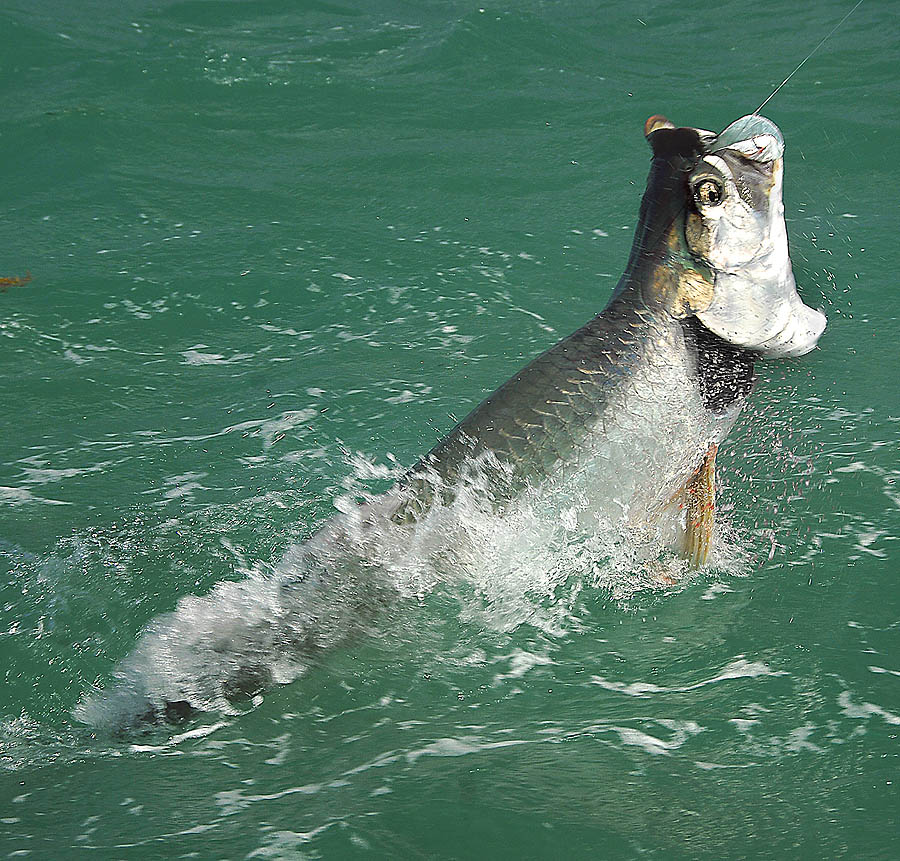
Well, we certainly got the spectacular daytime fights we wanted, and we got it on camera as well. Mission accomplished.
We spent one morning looking for bonefish, but with the wind blasting down on the shallow flats, we just couldn't locate them. Maybe next time…
But besides the always-playful dolphins, we enjoyed watching the gentle, giant manatees, elegant eagle rays, loggerhead sea turtles, fish eagles, and one monster of a hammerhead shark lurking just outside our marina.
If you go the Keys to fish tarpon, and if you don't already have a planned arrangement, you normally have to pay US$ 350-400 for 4 hours guided fishing. Besides the guiding price you will have to pay for a fishing license, bait and the expected tip.
The gear Dave uses is: 30 lb Daiwa boat rods, main line is 30 lb mono, 15 feet of 50 lb mono rubbing-trace, 2 feet of 70-100 lb mono trace, and size 5/0 Owner circle hooks.